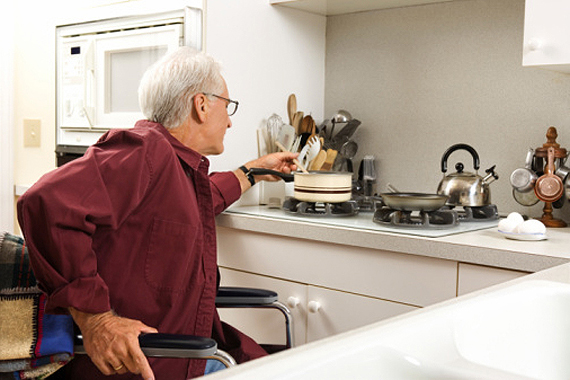Whether you’re in a wheelchair or suffering from asthma, you might be able to take tax deductions for home improvements made for medical reasons. You’ll need to jump through some hoops, including itemizing on your tax return, but the payoff could be worth it if your medical expenses are substantial.
Set aside a couple of hours to review IRS Publication 502, “Medical and Dental Expenses.” It explains which medical expenses qualify as tax deductions for home improvements, what the limitations are, and how to take the tax deductions on your tax return.
Tax Code Sets Bar High for Medical Deductions
The tax code is chintzy when it comes to tax relief for medical expenses. To begin with, these expenditures are deductible only if you forego the standard deduction and itemize on Schedule A. Another requirement for any write-off is that your payments are for bills not covered by insurance, reimbursed by your employer, or otherwise satisfied.
The big hurdle is that the expenses must be considerable. For most individuals, payments are deductible only to the extent that their total in any one year exceeds 10% of your adjusted gross income. So an AGI of $100,000 means no deduction for the first $10,000 of medical expenses.
If you’re 65 or older in 2013, you have an exception: Your nondeductible floor is 7.5 % through the end of 2016.
For 2012 and earlier years, the nondeductible floor was 7.5%.
Medically Necessary Home Improvements Qualify
If you manage to exceed the nondeductible floor, your outlays can cover more than the obvious medical expenditures for doctors, hospitals, eyeglasses, and the like. They also include payments for medically necessary home improvements or the installation of special equipment or facilities in your home.
However, that doesn’t mean you can deduct the entire cost of equipment or improvements that increase your dwelling’s value. Generally, the cap on the deduction is the amount by which the cost of the equipment exceeds the increase in your home’s value.
Say, for example, that an allergist recommends installing an air cleaning system for a family member with asthma. The costs add up to $15,000, and your home’s value increases by $12,000. The allowable deduction is only $3,000.
Other examples of improvements or equipment that readily pass IRS muster are an elevator or a bathroom on a lower floor that makes things easier for a home owner with arthritis or a heart condition.
Some Improvements Are More Valuable Than Others
More liberal rules apply when doctor-recommended improvements are made by a tenant to a rental property — for instance, a wheelchair ramp. A renter can claim the entire cost because the improvement adds nothing to the value of her property. Whether you own or rent, your deductibles include the entire cost of detachable equipment such as a window air conditioner that relieves a medical problem.
Even when equipment isn’t deductible because its cost is less than a home’s increase in value, you still can deduct operating and maintenance expenses. These might include electricity, repairs, or service contracts, as long as the equipment remains medically necessary.
The following expenditures generally don’t increase the value of a home, so they’re eligible in full for the medical expense deduction (subject to the nondeductible floor of 10% or 7.5%). The catch is that the primary purpose of the improvements must be to accommodate a residence to the disability of the taxpayer, the taxpayer’s spouse, or dependents who live there:
- Constructing ramps to a dwelling to help persons in wheelchairs.
- Widening interior and exterior doorways to accommodate wheelchairs.
- Widening or otherwise modifying hallways to accommodate wheelchairs.
- Installing railings, support bars, or other modifications to bathrooms.
- Lowering or modifying kitchen cabinets or equipment to accommodate wheelchairs.
- Moving or modifying electrical outlets.
- Installing lifts (excluding elevators, which might add to a home’s fair market value).
- Modifying fire alarms, smoke detectors, or other warning systems.
- Modifying stairs.
- Installing handrails and grab bars, whether or not in bathrooms.
- Modifying door hardware.
- Modifying areas in front of entrance and exit doorways.
- Grading of ground for better access to the residence.
Document Medical Home Improvements
IRS agents learned long ago that some taxpayers improperly claim or overstate medical deductions for things like central air and spas, and will scrutinize big write-offs for such home improvements. To be safe, get a statement from your doctor that explains the medical need for your expenditures. Hang on to bills and canceled checks that show what you paid for improvements.
When a hefty deduction is at stake, it’s also prudent to get a written opinion from a real estate appraiser that details how little or how much the installation raised the value of your residence. Should a disputed deduction end up in court, the IRS can bring in its own appraiser. But the time lag usually makes that appraisal less convincing.
This article provides general information about tax laws and consequences, but shouldn’t be relied upon as tax or legal advice applicable to particular transactions or circumstances. Consult a tax professional for such advice.
